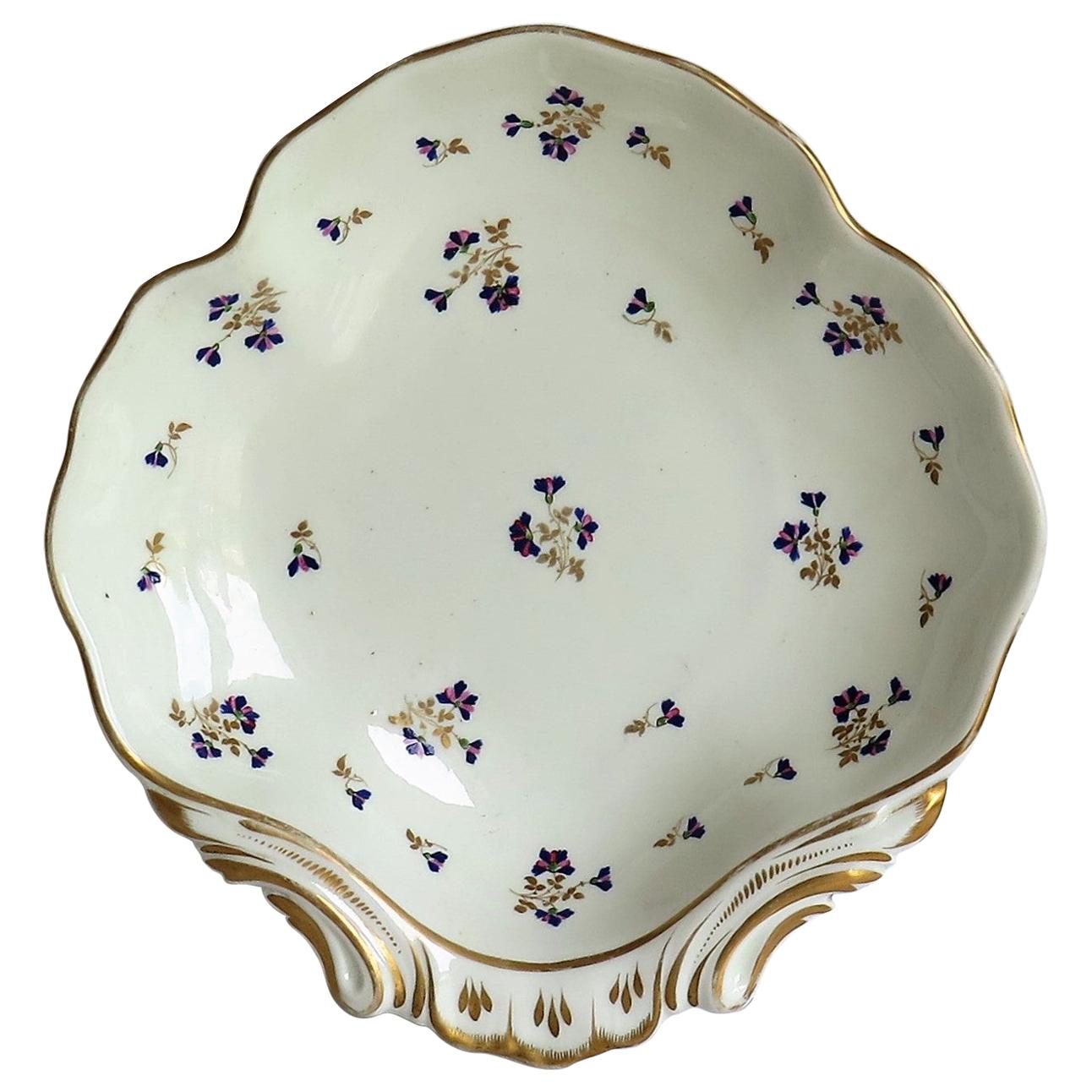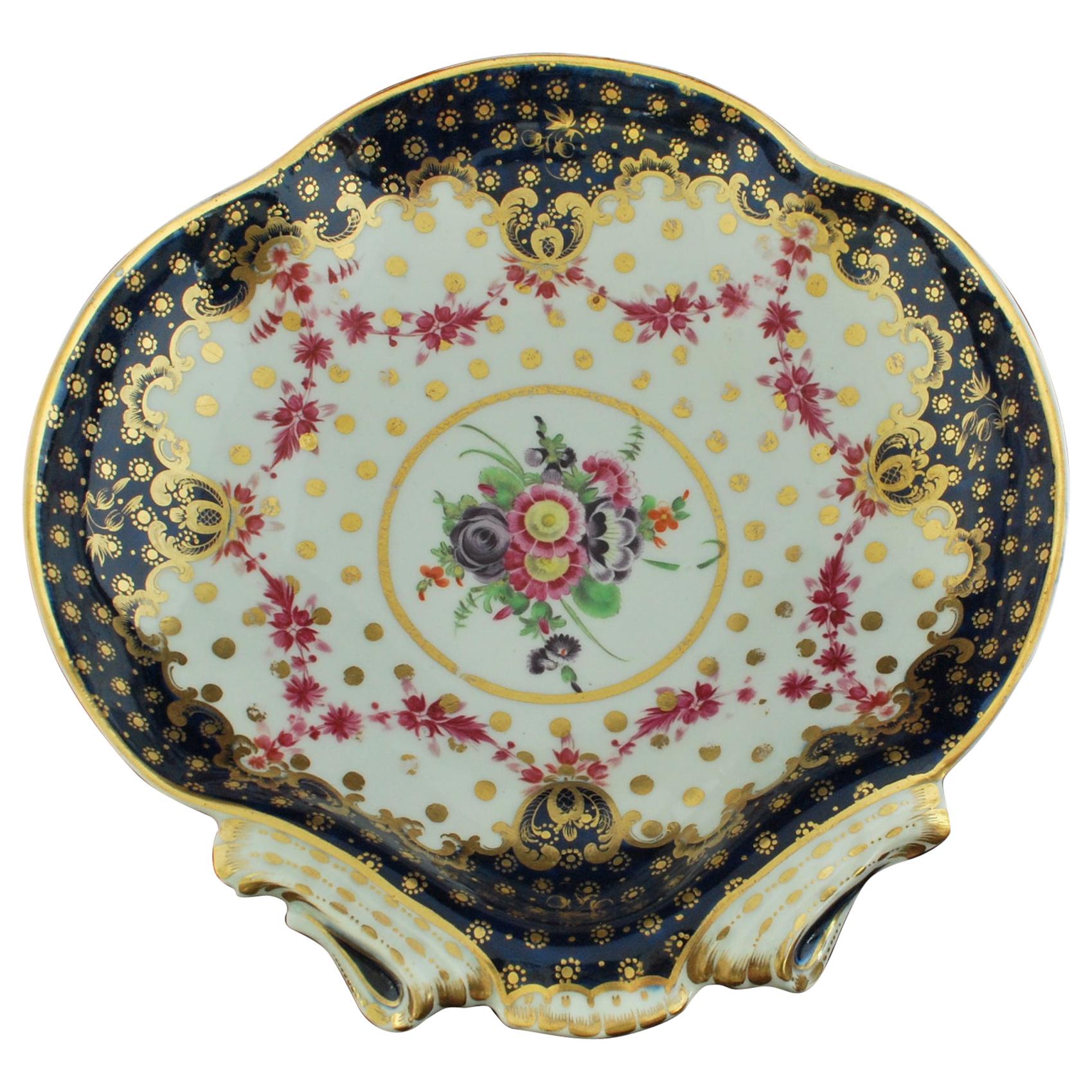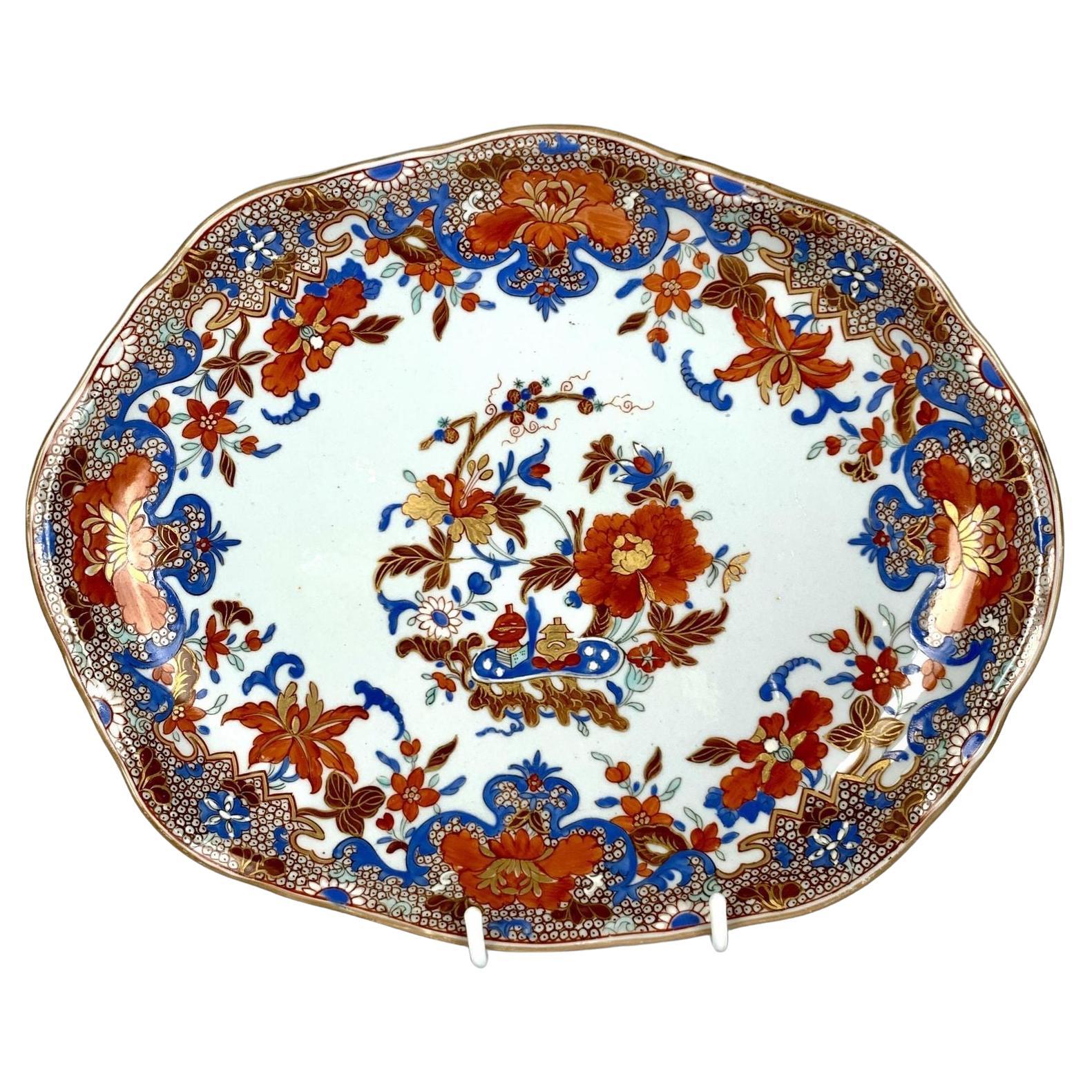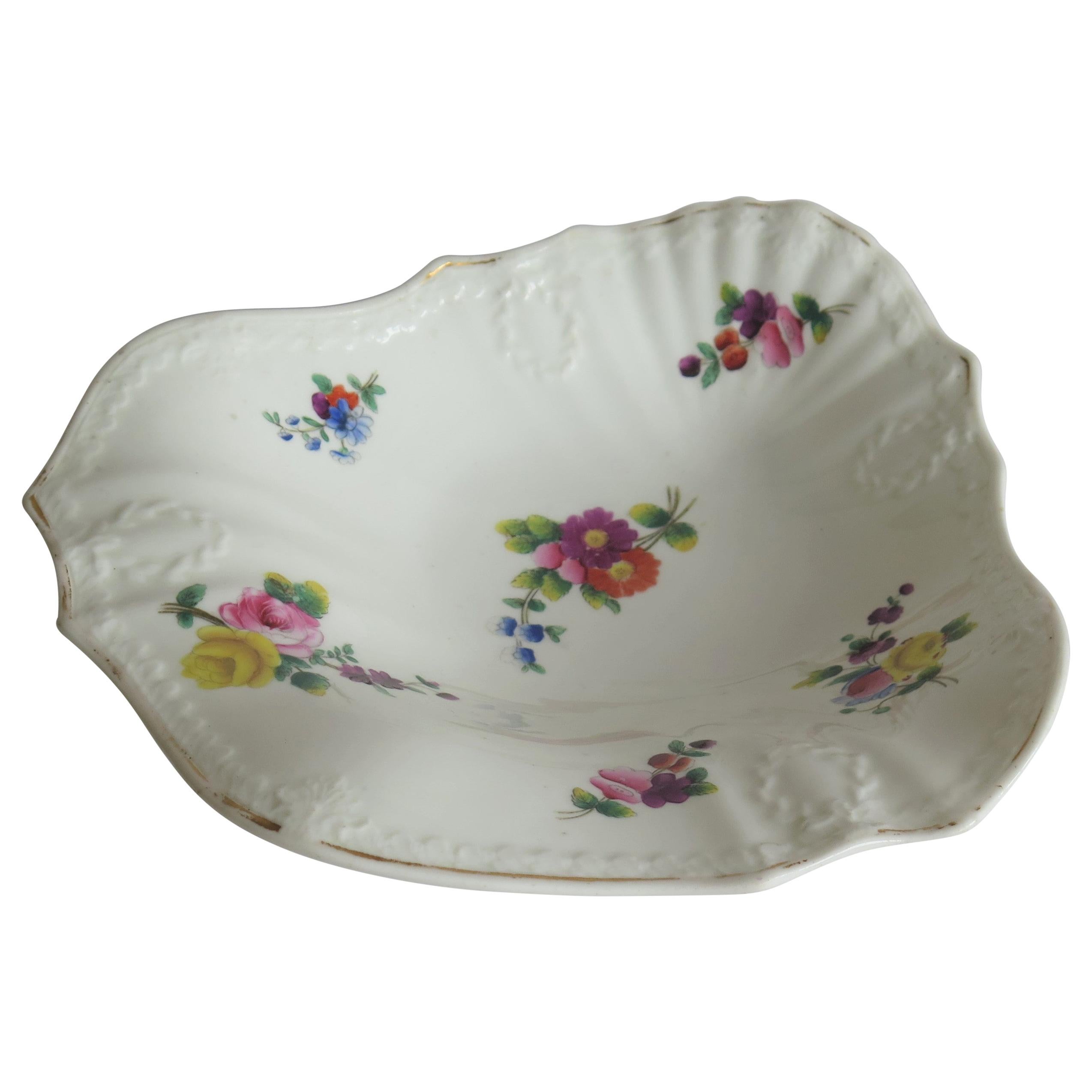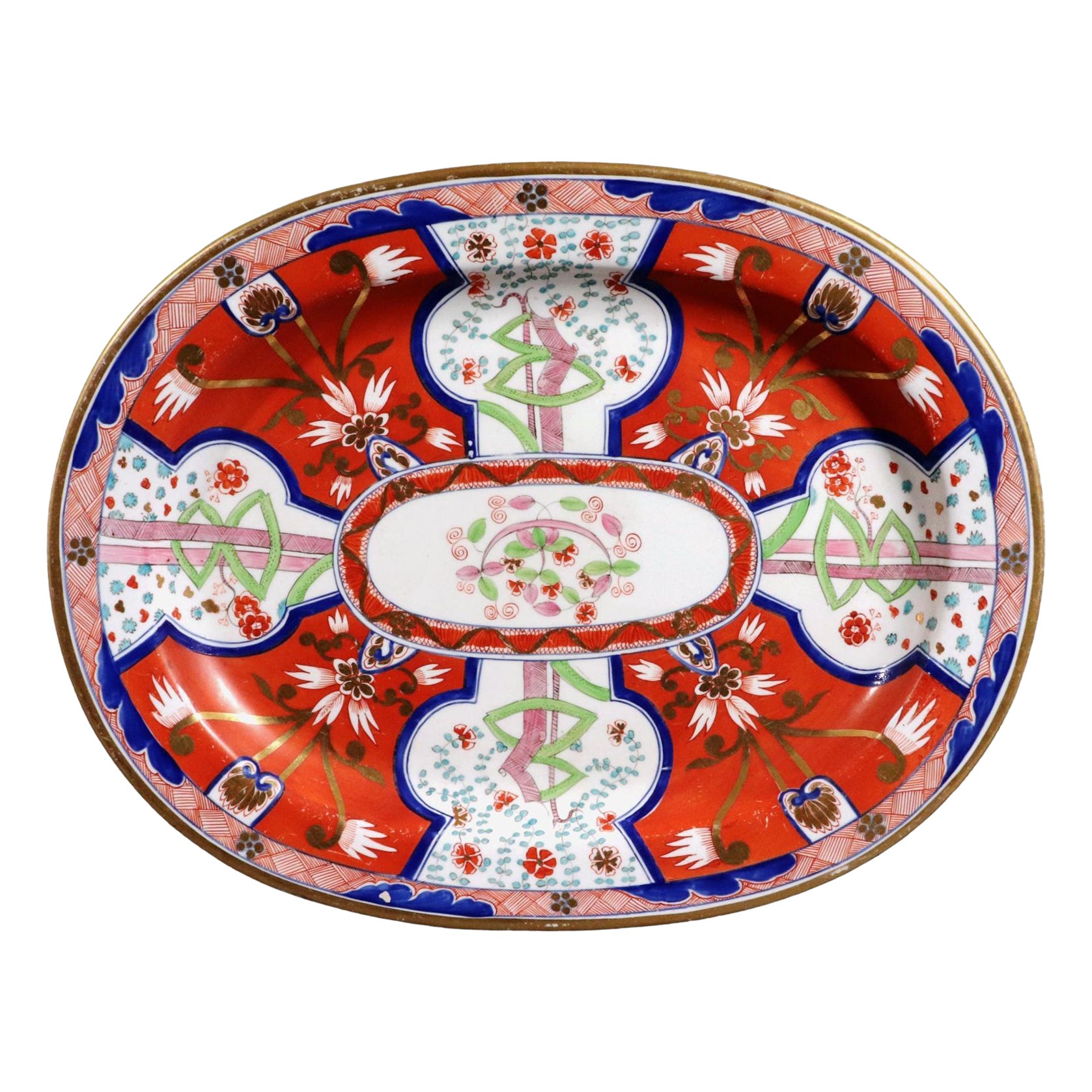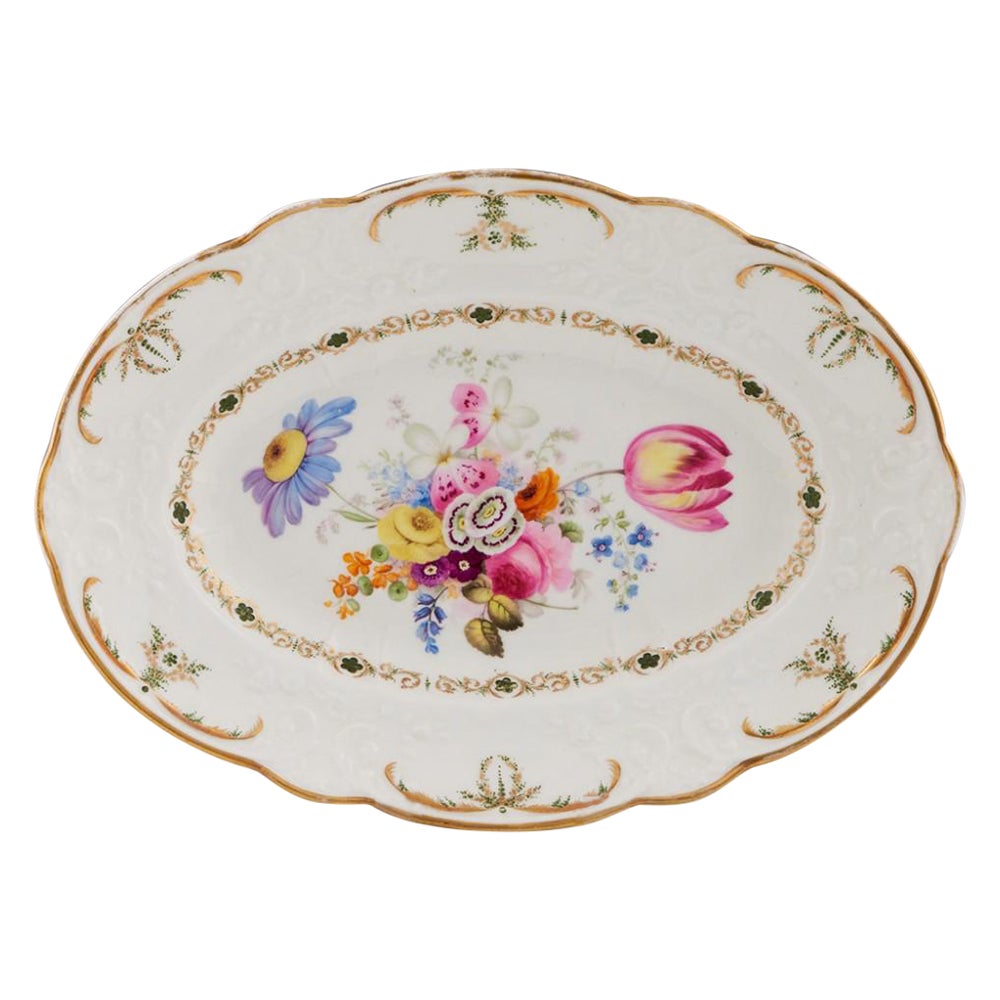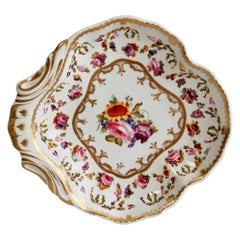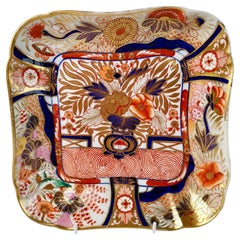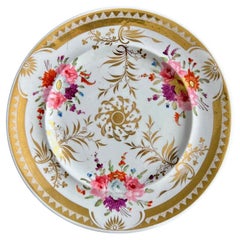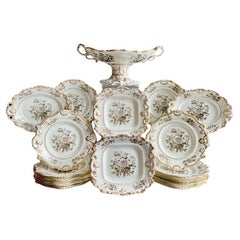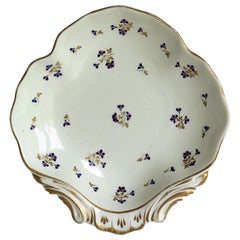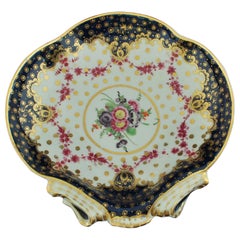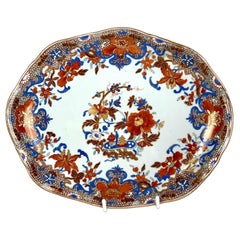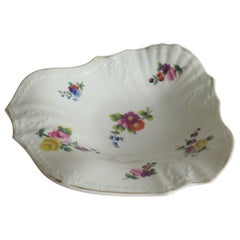Items Similar to Caughley Dish, Harlequin Pattern in Style of Donegall Service, ca 1793
Video Loading
Want more images or videos?
Request additional images or videos from the seller
1 of 16
Caughley Dish, Harlequin Pattern in Style of Donegall Service, ca 1793
$1,400
£1,069.38
€1,228.84
CA$1,998.51
A$2,191.21
CHF 1,144.23
MX$26,368.45
NOK 14,421.22
SEK 13,559.66
DKK 9,177.16
About the Item
This is a beautiful and intriguing porcelain dish made by Caughley and decorated at Chamberlains Worcester in or shortly after 1793. The dish has a "harlequin" pattern with six different finely painted Neoclassical rim motifs in the style of the famous "Marquess of Donegall" pattern.
Dishes like this one usually belonged to a large dessert service, however, it is possible that this was a sampler, showing several different pattern options for clients to choose from.
The Caughley factory ran between 1775 and 1799, founded by Ambrose Gallimore and Thomas Turner. It produced very fine soft-paste porcelain made for the middle classes in mostly underglaze blue and gilt decorations. Today the items are very collectable because of their high quality and elegant yet simple decorations, which tell the tale of the more ordinary well-to-do population, rather than the extremely wealthy clientele that many other factories served.
The Chamberlain factory was founded in the 1780s by Robert Chamberlain, who was responsible for the decoration department in the famous Worcester pottery during the Dr Wall period. He set up his own factory with his son Humphrey, initially buying up stock from Turner's Caughley factory for decoration, but then around 1794 starting to produce their own porcelain, became extremely successful. This dish is clearly from the period when Chamberlain was still purchasing porcelain from the Caughley factory.
The Marquess of Donegall pattern is a pattern that was first ordered at the Caughley factory in 1793 by the Marquess of Donegall. That service, which was in "harlequin" style with a different border motif on each item, was decorated by Chamberlains Worcester and described in their order books. The Caughley service was very large and expensive, consisting of 132 pieces and costing £217 10s and 6d... that's about £28,000 today! The whole service was famously sold by the family at Phillips in 1981, and has later been dispersed, with different pieces popping up in the market at different times.
This dish has six finely painted border motifs in pastel colours, and a beautiful centre decoration and scattered floral sprigs. The mystery about this dish is whether this was a spin-off pattern of the famous Donegall pattern, or whether it was in fact a sample used for the Marquess to choose patterns... we will never know.
The dish is marked with the hand written red Chamberlains Worcester mark; the mark is charmingly misspelled as "Chamberlins" - being a talented porcelain painter did not necessarily mean you had gone to school very long, so these misspellings did sometimes occur.
CONDITION REPORT The dish is in perfect antique condition without any damage, repairs, crazing and hardly any wear. There is a tiny firing fault on the foot rim, that has no bearing on the stability or quality of the dish; for Caughley porcelain of this era this is quite common.
Antique British porcelain is never perfect. Kilns were fired on coal in the 1800s, and this meant that china from that period could have some firing specks from flying particles. British makers were also known for their experimentation, which sometimes resulted in technically imperfect results. Due to the shrinkage in the kiln, items can have small firing lines or develop crazing over time, which should not be seen as damage but as an imperfection of the maker's recipes, probably unknown at the time of making. Items have often been used for many years and can have normal signs of wear, and gilt can have signs of slight disintegration even if never handled. I will reflect any damage, repairs, obvious stress marks, crazing or heavy wear in the item description but some minor scratches, nicks, stains and gilt disintegration can be normal for vintage items and need to be taken into account.
There is widespread confusion on the internet about the difference between chips and nicks, or hairlines and cracks. I will reflect any damage as truthfully as I can, i.e. a nick is a tiny bit of damage smaller than 1mm and a chip is something you can easily see with the eye; a glazing line is a break in the glazing only; hairline is extremely tight and/or superficial and not picked up by the finger; and a crack is obvious both to the eye and the finger. Etcetera - I try to be as accurate as I can and please feel free to ask questions or request more detailed pictures!
DIMENSIONS: 29.5cm (11.6") long.
- Creator:Chamberlains Worcester (Artist),Caughley Porcelain (Maker)
- Dimensions:Height: 1.1 in (2.8 cm)Width: 11.6 in (29.47 cm)Depth: 6 in (15.24 cm)
- Style:Neoclassical (Of the Period)
- Materials and Techniques:
- Place of Origin:
- Period:1790-1799
- Date of Manufacture:ca 1793
- Condition:Wear consistent with age and use. in excellent antique condition without any damage, repairs or crazing, and only some light wear.
- Seller Location:London, GB
- Reference Number:Seller: A-CAU041stDibs: LU4805144755162
About the Seller
5.0
Vetted Professional Seller
Every seller passes strict standards for authenticity and reliability
Established in 2016
1stDibs seller since 2019
227 sales on 1stDibs
Typical response time: 1 hour
- ShippingRetrieving quote...Shipping from: London, United Kingdom
- Return Policy
Authenticity Guarantee
In the unlikely event there’s an issue with an item’s authenticity, contact us within 1 year for a full refund. DetailsMoney-Back Guarantee
If your item is not as described, is damaged in transit, or does not arrive, contact us within 7 days for a full refund. Details24-Hour Cancellation
You have a 24-hour grace period in which to reconsider your purchase, with no questions asked.Vetted Professional Sellers
Our world-class sellers must adhere to strict standards for service and quality, maintaining the integrity of our listings.Price-Match Guarantee
If you find that a seller listed the same item for a lower price elsewhere, we’ll match it.Trusted Global Delivery
Our best-in-class carrier network provides specialized shipping options worldwide, including custom delivery.More From This Seller
View AllBloor Derby Shell Dish, White, Floral Sprigs Moses Webster, Regency, 1820-1825
By Bloor Derby
Located in London, GB
This is a beautiful one-handled dessert serving dish or "shell" dish made by Derby between about 1820 and 1825 in the Regency era and decorated by Moses Webster. These dishes were to...
Category
Antique 1820s English Regency Serving Bowls
Materials
Porcelain
Chamberlains Worcester Porcelain Dish, Nelson or Fine Old Japan pattern, ca 1805
By Chamberlains Worcester
Located in London, GB
This is a striking square serving dish made by Chamberlains in Worcester around 1805. The dish bears the Fine Old Japan pattern, often called the Nelson pattern.
Robert Chamberlai...
Category
Antique Early 1800s English Georgian Serving Bowls
Materials
Porcelain
Yates Plate, White, Gilt Shark Teeth Pattern and Floral Reserves, ca 1825
By William Yates
Located in London, GB
This is beautiful plate made by the Yates factory in about 1825. The plate is decorated with in a white ground with finely hand painted flower reserves, gilt sprigs and a characteris...
Category
Antique 1820s English Regency Porcelain
Materials
Porcelain
Minton Dessert Service, Inverted Shell White with Monochrome Flowers, ca 1830
By Minton
Located in London, GB
This is a stunning dessert service made by Minton probably around the year 1830, in their "second period". The service consists of a high footed centre piece, two square dishes, two ...
Category
Antique 1830s English Rococo Revival Dinner Plates
Materials
Porcelain
$5,325 / set
Free Shipping
Edmé Samson Porcelain Cabaret Tray, Worcester Style Blue with Flowers, 19th C
By Edmé Samson, Royal Worcester
Located in London, GB
This is a beautiful cabaret tray made by Edmé Samson in Paris some time in the 19th century. The tray is in the 'blue scale' style that the Worcester fact...
Category
Antique 19th Century French Rococo Platters and Serveware
Materials
Porcelain
Samuel Alcock Porcelain Plate, Maroon Staffordshire Border with Pansy, 1854
By Samuel Alcock & Co.
Located in London, GB
This is a striking plate with the popular "Staffordshire" moulding, a deep maroon rim with bold beige and white foliage, and a large hand painted yellow and purple pansy in the centr...
Category
Antique 1830s English Rococo Revival Porcelain
Materials
Porcelain
You May Also Like
Georgian Derby Shell Dish or Plate Hand Painted & Gilded Pattern 129, Ca 1810
By Royal Crown Derby Porcelain
Located in Lincoln, Lincolnshire
This is a beautiful porcelain shell dish or plate hand painted and gilded in pattern 129, made by the Derby factory, in the reign of George 111 in the early 19th century, circa 1810.
Shell dishes, named as such for taking the shape of a shell were used in Dessert services.
This dish has been exquisitely hand decorated in a French influenced "Chantilly" pattern ( No. 129) consisting of scattered sprigs of cornflowers in pink, blue and green with gilt leaves and with further rich hand gilding around the rim and handle section.
The dish has the early Derby...
Category
Antique Early 19th Century English George III Decorative Dishes and Vide...
Materials
Porcelain
Dessert Dish, Worcester, circa 1770
By 1st Period Worcester Dr. Wall
Located in Melbourne, Victoria
A dessert dish, in the shape of a shell, and decorated in the Sevres manner.
Category
Antique Late 18th Century English Neoclassical Porcelain
Materials
Porcelain
Antique Chamberlains Worcester Porcelain Dish in Kakiemon Style England Ca. 1810
By Chamberlains Worcester
Located in Katonah, NY
Painted at Chamberlain's Worcester around 1810, this dish draws inspiration from 17th-century Japanese Kakiemon palette and design.
The style showcases enamels in a distinctive Kakie...
Category
Antique Early 19th Century English Regency Decorative Dishes and Vide-Poche
Materials
Porcelain
H & R Daniel Porcelain Shell Dish in Pattern 3884 fine quality, circa 1830
Located in Lincoln, Lincolnshire
This is a fine porcelain Shell Dish, beautifully hand painted in pattern 3884 and made by H & R Daniel of London Road, Stoke, Staffordshire Potteries, England.
Pieces by H & R Daniel are beautifully decorated and sought after, being very expensive when first made.
The dish is quite large and well potted with an embossed raised moulded design to the upper outer rim section. The pattern is called Ribbon & Wreath, pattern number 3884 and is fully recorded as an H & R Daniel pattern. It is finely hand painted with individual flower sprigs, with a gold gilded inner rim edging.
The dish has 3884 hand painted in red on the inner foot rim.
A beautiful piece by this renowned high quality factory
NOTES: H & R DANIEL
Henry Daniel (1765-1841) was an enameller and colour maker. Prior to setting up his own manufactory in 1822 he ran a business within the Spode II* factory from at least 1805 to August 1822.
In 1822, Henry formed his own business. Richard (1800-1884) Henry’s second son was officially made a partner in 1826. The manufactory known as H & R Daniel continued until 1846 when it ceased due to insolvency.
Daniel’s wares were said to be on a par with the best hand painted porcelain of the time. Prestigious customers included the Earl of Shrewsbury...
Category
Antique Mid-19th Century English Regency Ceramics
Materials
Porcelain
Regency Coalport Porcelain Dish Painted with the Dollar Pattern
By Coalport Porcelain
Located in Downingtown, PA
Coalport Porcelain Dish Painted with the Dollar Pattern,
Circa 1810
The large oval Coalport porcelain dish is painted in the Dollar Pattern which is a ...
Category
Antique Early 19th Century English Regency Platters and Serveware
Materials
Porcelain
A Fine Swansea Porcelain Oval Dish, c1820
By Swansea Porcelain
Located in Tunbridge Wells, GB
A Fine Swansea Porcelain Oval Dish, c1820
Additional information:
Date : c1820
Period : George IV
Marks : Red capitalised Swansea mark as shown. Label for Leslie Joseph collection
O...
Category
Antique 19th Century English George IV Porcelain
Materials
Porcelain
More Ways To Browse
Harlequin Painted
Royal Worcester Blue Cup And Saucers
Royal Worcester China
Royal Worcester On Sale
Royal Worcester Signed
Rs Germany
Russian Imperial Porcelain
Sevres Cup And Saucer
Sevres Tuileries
Soviet Ceramics
Spode Cup And Saucer
Toucan Porcelain
Two Quail
Vintage Blue Glass Sugar Bowl
Worcester Bird
Antique Worcester China
Bing Grondahl Nouveau
Blue And White Arabic Ceramics
